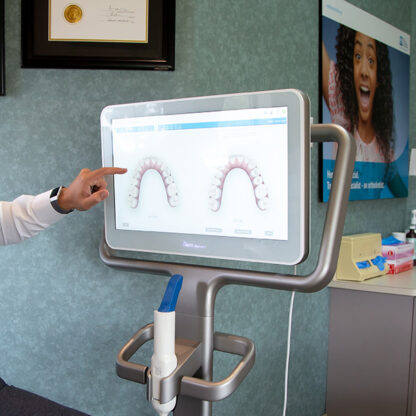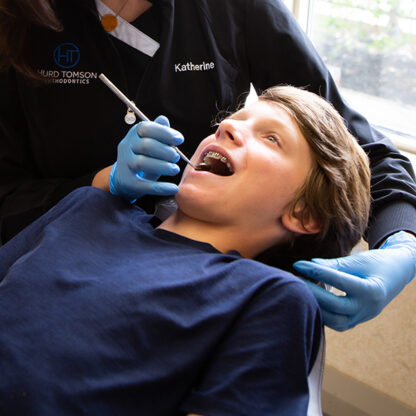Early Orthodontic Treatment Burlington and Waterdown
Early Orthodontic Treatment for Children
What is the difference between early orthodontic treatment, and regular orthodontic treatment and why might my child need early treatment? How will early treatment benefit my child in the long-run?
These are just a few of the questions surrounding the topic of early orthodontic treatment for children. The Canadian Association of Orthodontists recommends that children see an orthodontist as early as age seven. At this point the orthodontist will evaluate whether your child will need orthodontic treatment.
Early treatment (also known as Phase-One) typically begins around age eight or nine (Phase-Two will begin around age 11 or older). The goal of early treatment is to correct the growth of the jaw and certain bite problems, such as underbite (crossbite) or shifting of the jaw to one side on closing. Early treatment also helps to make room for permanent teeth to come in properly, lessening the chance of more complicated orthodontic treatment in the future.

How to tell if your child may need early orthodontic treatment:
- Early or late loss of baby teeth - your child should typically start losing teeth around age five and have all their permanent teeth around age 13 (not including wisdom teeth)
- Difficulty chewing and/or biting
- Mouth breathing
- Your child continues sucking their thumb after their adult teeth have started to come in
- Speech impediments
- Protruding teeth (the top teeth and the bottom teeth extend away from each other)
- Teeth that don't come together in a normal manner or even at all
- Shifting of the jaw when your child opens or closes their mouth (crossbites)
- Crowded front teeth around age seven or eight

What causes orthodontic problems, and how will early prevention benefit my child?
Orthodontic problems such as crowding of the teeth, too much space between the teeth, jaw growth problems, protruding teeth, and bad bites can be inherited or caused by injury to the mouth, early or late loss of baby teeth, or thumb sucking habits.
Most children lose all their baby teeth by age 13, and by the end of their teen years, the jaw bones will stop growing. Orthodontic procedures for adults often take more time and can involve tooth extraction or oral surgery. Receiving early orthodontic treatment as a child can help prevent the need for orthodontics as an adult, and in some cases can significantly reduce the chances of extraction or surgery in the future.
If your child is between the ages of seven and eight and shows signs of needing orthodontic care, or if you have been directed by your family dentist to visit the orthodontist, please contact our practice and schedule an appointment. Our team will provide your child with an initial exam, and discuss with you the best steps to take toward caring for your child's smile.



